Fire bank
The fort “Emperor Alexander I” never participated in hostilities, but made a great impression on the commander of the allied squadron, Admiral Charles John Nepira, who did not risk the Crimean war to attack the Russian positions in the Baltic
Thinking about stories sea wars, you can come to a very interesting conclusion. Despite the constant development of naval weapons and the improvement of naval combat tactics, in most cases the attack of the coastal fortress from the sea turned out to be not just extremely difficult and risky, but also generally irrational: coastal artillery was usually massive and numerous for obvious reasons. True, she could not move so quickly as onboard, but to each his own.
The Roman army and the attempt to storm Syracuse from the sea fleet under the command of Marcellus in 212 BC. e., and one of the first attempts at fighting armored ships with coastal fortifications, which took place near Charleston in 1763. Philip Colomb in his work “Sea War” described it this way: “On March 3, three new ships (these were monitors. - Approx. Of the author) shot at Fort McAleister for eight hours, causing him no more harm than could be fixed every time during the night, while corrections of some of the vessels were to continue after the bombing even before the end of the month. ”
In the battle of the coast with the fleet for many centuries, victory remained beyond the coast. Therefore, Napoleon once said: "I prefer one gun on the bank to ten guns on the ship." He knew what he was talking about - being just a captain, in December 1793, Napoleon captured Fort Egillet, turned his guns toward the raid and forced the powerful Anglo-Spanish fleet of Admiral Hood to hastily get out of Toulon.
And the future Admiral Horatio Nelson during the siege of Calvi from June 19 to 10 August 1794, at the suggestion of the general who commanded the siege group, to take the fortress with a decisive assault from the sea, said: “I take the liberty to assert that the possibility of opposing the tree to the walls already significantly late. " What to say about the two failed attempts to take the defensive structures of the Dardanelles in the 1807 and 1915 only with the help of ships.
The attack of the coastal fortresses was successful only if the naval commander had a competent assault plan, correctly identified the weak points of the fortress and key forts for attack, and could also organize effective interaction between the ship artillery and the forces of the naval landing force (ground grouping). For example, for a long time, the Russian admiral Fyodor Ushakov of Corfu, a sea fortress in 1799, was considered a classic example of a combined operation to seize a strongly fortified maritime fortress. And although it was ultimately taken from land - after the close blockade was established, the attack on the island-fort Vido, which was defending the fortress and raid from the sea and reinforced by French engineers on the personal instructions of Napoleon, played the decisive role.
“Of the eight hundred French who were at this time on the island, only a few on the rowing ships managed to return to the fortress, while the others were beaten and sunk. Brigadier General Pivron, the commandant of the island and another 422 man, among whom were 20 officers, were taken prisoner, ”Ushakov reported after the battle.
Who watched the film “Ships Storm Bastions”, remembers that Alexander Suvorov, having received the report of Ushakov, wrote in reply: “Why wasn’t I at least Corfu at Corfu!”
Russian trace in the history of artillery
Russia left a special mark on the history of coastal artillery. Here, its development did not just go on its own, it was here that the theory of the deep construction of coastal artillery batteries was first developed and put into practice, concentrated fire issues were worked out for the highest fire density, and the effective interaction of the army, navy and coastal artillery was carried out in combat.
Moreover, if Russian artillery was officially divided into large (siege), garrison (fortress, coastal), field and naval (ship) already under Peter I, a similar organization in Western European artillery was introduced almost half a century later. For many it will be a revelation that the priority in the development of the theory of the so-called “fort fortress” and its implementation in practice belongs not to the French marshal Vauban, but to the Russian emperor Peter I. It was he who, having carefully studied foreign experience, introduced into Russian military art the terms "fort" and "fortification" and created the science of coastal fortification. Its basic principles, implemented during the construction of the Kronstadt fortress, remained relevant until the twentieth century.
Peter I outlined his ideas in this area in “Discourses on Forts and Strongholds”, which were released in the 1724 year. But the French military engineer, divisional general Montalembert, who is considered to be the founder of modern fortification science in Europe, drew up a plan for the construction of Cherbourg fortress almost 70 years later and only after a detailed acquaintance with Russian Kronstadt. Then these ideas "with Russian roots" formed the basis for plans of such fortified areas as the French Maginot Line, the German Siegfried Line, the Finnish Line - Mannerheim and the Soviet Pre-War Fortified Areas in the western part of the country.
Structurally, the coastal artillery guns for a long time did not differ from their counterparts used in land fortresses and siege artillery - they only made special iron-reinforced carriages. Thus, long-barreled cannons with a flat trajectory made it possible to effectively bombard vertical structures — the ship’s side, and hafunits (howitzers) and mozhors (mortars) with a short barrel and a mounted trajectory made it possible to fire at closed targets and horizontal surfaces, for example, on a ship’s deck. The average firing range of guns ranged from 1000 — 5000 meters. Moreover, Russian guns, hafunits and mozhory were superior in their design and characteristics to their foreign counterparts.
At the beginning of the 18th century, measures were taken in Russia to eliminate the multi-caliber artillery and improve the characteristics of the guns: a limited number of calibers were installed, a weight scale was developed, based on the “Russian artillery pound”. The core weight was taken as a cast iron core with a diameter of 2 inch (about 5 centimeters), and the artillery pound was equal to the 1,2 trade pound (but the weight of explosive shells was measured in trade pounds). The charges themselves began to be placed in the baskets, thanks to which the rate of fire of the guns increased dramatically.
The largest coastal artillery gun of that period was the 24-pound cannon, which had a 151,6 caliber of a millimeter, a barrel length of 21 caliber and sent a projectile with an initial velocity of 592 m / s. Also in the fortresses, 2- and 5-pood mortars were used: the latter had a millimeter 245,1 caliber, a 3,1 caliber length and the initial velocity of the 214 projectile, m / s. These guns have already fired cast-iron grapeshot, which had the best ricochet properties, and used new projectiles - lighting.
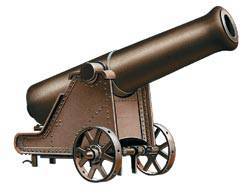 The Russian three-puddle gun of the 1833 model had a 3,63 m long barrel and fired bombs with an 50 kg bomb. Later, the gun was modernized by increasing the length of the barrel and equipping it with a conical chamber, due to which the powder gases in the barrel bore acted more efficiently.
The Russian three-puddle gun of the 1833 model had a 3,63 m long barrel and fired bombs with an 50 kg bomb. Later, the gun was modernized by increasing the length of the barrel and equipping it with a conical chamber, due to which the powder gases in the barrel bore acted more efficiently. In 1836, Colonel Wenglovsky created an iron-iron gun carriage for the 24-pound cannon, and later constructed iron-carriages for guns of various calibers. After 10 years Wenglovsky's carriage was introduced into the coastal and fortress artillery - it was made of wrought iron and mounted on a swing frame. With horizontal hovering, the carriage and swivel frame rotated manually. The lifting mechanism for vertical guidance consisted of a screw with a handle located under the breech. Rotation of the handle achieved a smooth change in the angle of elevation of the gun. When fired, the carriage mounted on special rollers rolled away along a pivoting forward tilted frame. Such a slope provided self-rolling of the carriage and limited rollback.
The first half of the 19th century also includes the use of shock-firing tubes, consisting of a hollow rod of bird feathers, filled with gunpowder and having a cake of impact composition at its upper end. Before the shot, the tube was inserted into the ignition channel, the hammer of the firing device struck the cake, the powder charge of the tube ignited and the fire was transferred to the gun charge.
In the work of E. Wessel "Artillery", published in 1857 year, it is stated: "In the artillery for the guns, located on coastal batteries, used, for example, naval artillery, rapid-fire tubes, flammable from impact, in order to shoot, following the ship with an eye, I could shoot at the very time when he came under the shot. "
A little earlier, in 1833, the Russian sea fortresses received the 3-pood bomb bomb - the first cannon designed specifically for coastal artillery. She had a significant range for that time — about 2000 meters — and used large-caliber bombs of great destructive power. The caliber of the gun was 273 millimeter with the barrel bore length 10 caliber, the maximum angle of elevation reached 9 degrees, and the initial velocity of the projectile - 357 m / s.
The new gun had a powerful destructive effect, had a flat trajectory and sufficient strength, was simple in design and relatively cheap to manufacture. Its combat capabilities are characterized by the following example: in 1834, in Kronstadt, firing was carried out at the block-hole from the 1-pood unicorn, the 36-pound cannon and the 3-pood bomb-bomb at a distance of 1300 meters. Blokshiv sustained 48 hits from the first two guns, but after 20 hits from a bomb bomb went to the bottom. In 1849, the design of the gun was changed, increasing the barrel bore length by two calibers, as a result of which the initial speed and firing range (to 2500 meters) increased.
In the second half of the 1850-s, artillery scientist N. Mayevsky began designing a long-range cannon for firing at ships. His gun was the most advanced weapon of the last period of smooth-bore artillery, surpassing the coastal guns of the countries of Western Europe. It was cast from steel, it was durable, had a large initial velocity and range of the projectile, as well as good accuracy of fire. Tests of bombing guns of various designs showed that the gun made according to the English model withstood 400 shots, the Russian Baumgart cannon (sample 1854 of the year) broke after the 780 shots, and the same Mayevsky gun remained intact even after the 1000 shots.
The gun of N. Maiyevsky under the designation of a gun of the 1857 model of the year was adopted by the coastal artillery in the same year. Its caliber is 196 mm, the length of the bore is 15 caliber, the maximum angle of elevation is 22 degrees, the maximum firing range is 4300 meters, and the initial velocity of the projectile is 427 m / s. By the way, a little earlier, in 1848, in Kronstadt, in the lower floor of one of the forts, 22 rocket devices were installed for salvo firing at ships. In August of the same year, the first experimental firing took place, showing the maximum range of 2600 meters. This was the first ever case of use of missiles in the coastal defense system.
The legendary "concrete battleship", the American fort "Drum", as the main caliber had 14-inch guns M1909, but could not resist the powerful pressure of Japanese troops
XX century begins
By World War I, ship artillery underwent a qualitative development (caliber increased to 381 millimeters, initial projectile speeds to 950 m / s, the rate of fire of large caliber guns to 1 — 2 rounds per minute, the weight of projectiles increased to 900 kilograms), and also significantly improved ship defenses served as a catalyst for the further development of coastal defense artillery. The answer was, for example, 12-inch (305-mm) guns with a barrel length 52 of caliber, which had an 22,8 kilometer firing range and shot with 446,9 kilograms (the weight of a bursting 61,5 kilogram) with an initial speed of 778 m / s.
However, at the beginning of the twentieth century in the leading countries of the world there was a steady opinion about the loss of coastal defense artillery of its leading positions in the field of coastal defense. This conclusion was made on the basis of the idea that the command of fleets prevailed about the inexpediency of the struggle of the fleet with coastal batteries. Bottom line: by the 1914, coastal artillery in Germany, France, Great Britain and Russia were mainly equipped with obsolete instruments.
But it was during the First World War that the increased role of coastal artillery was clearly manifested. In particular, at the very beginning of the campaign, the situation forced the Russian command to take urgent measures to create a strong artillery defense of the naval bases and the coast in the Baltic and the Black Sea. For the first time in history, a defense of unprecedented depth, consisting of minefields and coastal batteries, was created in the Gulf of Finland: the German fleet, having an enormous numerical superiority, could not break through these positions.
Quite unusual tasks had to be accomplished by units of the German coastal artillery: they did not defend the coast, but violated enemy shipping. At the end of 1914, the German offensive to the west stopped, and the Kaiser troops did not succeed in taking French ports on the English Channel and Pas-de-Calais. Therefore, the Allied transports almost freely cruised at night between the British and French shores, bringing up troops and supplies.
To counteract these shipments, the Germans attracted four 380-mm naval guns of coastal defense, one of which was installed south-west of Ostend, in the park of one of the locks (the Pomerania battery), and the other three on the North Sea coast (Deutschland battery) . The construction of “Pomerania” was conducted for half a year - a ditch was excavated with a depth of 7 meters and a diameter of 20 meters, the piles were driven into it and poured with concrete, on which they installed the bottom mast machine. The firing range of the 400-kg projectile was 45 kilometers, and the 750-kg projectile 35 kilometers.
27 June 1917, at six in the morning, the first projectile from Pomerania fell in Dunkirk. After that, the port and the fortifications of the city were constantly under fire from German gunners. A battery "Deutschland" successfully used against British monitors, firing German positions on the coast. For example, 22 September 1917, the Germans needed only six shots to force a British monitor from the battery at a distance of a kilometer 28,1 to stop the shelling of Ostend and move away.
The American coastal defense rail transporter of the 1920 model of the year with a large-caliber 356-mm gun was taken as the basis for the design of the Soviet transporter TM-1-14
"Ships" on wheels
In 1857, the work of Lieutenant Colonel P. Lebedev “Use of railways to protect the continent” was promulgated, becoming the first fundamental research on the use of railway artillery in coastal defense. Lebedev, in particular, pointed out that railway artillery would be the most important means of defense, complementing and, in some cases, replacing stationary coastal artillery: “... in the fight of the mainland with the fleet it can be considered the best way to help the coastal fortifications, and for lack of such and replace them. "
The device of the railway track, proposed by Lebedev, should have looked interesting. In the plan it was a double-track railway. The first path, located closer to the coast and protected by an embankment, had to ply rail batteries, and the second, remote from the sea, had to bring ammunition, evacuate the wounded, etc. However, despite its uniqueness, Lebedev’s proposal was completely ignored by the government, and the military command and the scientific community. As, however, like the proposal expressed by X. NXX in the year 1860, to create for defense of the coast of the Black and Baltic Seas 35 four-gun railway batteries for the defense of the Black and Baltic Seas. The Marine Scientific Committee, which considered the project, decided to submit it to the archive.
Fate turned out to be favorable only to the installation of 356-mm caliber 52 guns, originally intended for Izmail combat cruisers, whose construction program was not implemented due to the war that began in 1914.
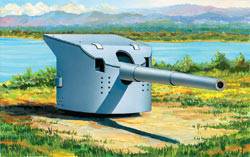 The SK L / 150 45 1914 mm X-gun was installed on the Qalvik coastal defense battery on the Norwegian island of Frey
The SK L / 150 45 1914 mm X-gun was installed on the Qalvik coastal defense battery on the Norwegian island of Frey In 1927, Soviet designers, under the leadership of A. Dukelsky, developed a draft design for placing 356-mm guns on railway transport. Soon the project manager got into one of the famous sharashkas, where he did all the preparatory work for the 356-mm conveyor project. In the middle of 1930, he delivered a report at the Artillery Maritime Research Institute, in which he justified the possibility of placing 356-mm guns on the railways. And in October, 1930 of the year on the basis of special production of the Leningrad Metal Plant under the leadership of A. Dukelsky created the Central Design Bureau of Shipbuilding No. 3, which was entrusted with the development of the technical design of the TM-1-14 artillery conveyor. The work was completed by the beginning of March 1931.
The Soviet conveyor was based on the American equivalent of the 1920 sample of the year. The main purpose of the TM-1-14 was to fight the enemy’s linear fleet: the transporter could fire from concrete foundations that provided all-round shelling, or from a railway track in a limited sector. TM-1-14 was supplied with firing control devices, which provided firing of sighting and central guidance at sea visible and invisible targets, fixed targets, as well as targets moving at speeds up to 60 nodes.
The first battery (No. 6) was transferred to the Far East, and the second (No. 11) consisting of three transporters remained in the Baltic. Of course, the transporters could shoot at ground targets as well, which they basically had to do during the Great Patriotic War. As well as the 305-mm cannons delivered to the transporters, made by Vickers before the revolution as spare for the battleships Andrei Pervozvanny, Imperator Pavel I, John Chrysostom and Saint Eustachy. The new conveyors received the designation TM-2-12 and TM-3-12 (the latter used guns taken from ships).
It was possible to shoot at real targets and transporters TM-1-180 with 180-mm guns B-1-P of 57 length with gauges with upward-opening piston bolt the three-gun turret MK-1-180 cruiser "Kirov". This tool provided the 3 kilogram mass with the initial speed of 180 m / s and the maximum firing range of the 97,5 cable. Unlike other transporters TM-920-206 allowed the possibility of conducting circular firing from any point of the railway track. 1 of such transporters were manufactured, which near Leningrad had to bear the brunt of the counter-battery struggle with German siege guns of 180 — 20 millimeters caliber.
The monograph by L. Amirkhanov “Sea cannons on the railroad” gives such an example of the combat use of transporters: “10 June 1942, one of the battery transporters No. 19, was tasked with firing an airfield in Gatchina, where German aircraft were based. While firing at the airfield, the remaining three battery transporters No. 19 fought against German batteries, which tried to prevent the shelling of the airfield. According to aerial photography, the shooting results were excellent. ”
The TM-1-14 transporters were in service up to the 1952 year, and the TM-1-180 - up to the 1961.
The coastal defense complex Bereg includes 4-6 self-propelled gun mounts, a mobile central post and combat duty support vehicles. Autonomously or in conjunction with aviation the complex is able to prevent the landing of enemy naval assault and in half an hour destroy a large detachment of enemy ships
The guns of the island of Navarron
- The guns of the fortress of Navaron. In them the whole point. They cover the entrances to both straits from the north. If we were able to suppress these guns, we would have removed the garrison from Keros this very night.
Mallory did not utter a word, realizing that he would hear the main thing.
“These are unusual guns,” Jensen continued slowly.
- Gunners believe that their caliber is at least nine inches. I think these are 200 mm guns. Our soldiers on the Italian front fear them more than anything else.
The speed of the shells is small, but they lie down for sure. Be that as it may, he added gloomily, "Sybaris" was sunk for some five minutes.
- Sybaris? I heard something ...
- Cruiser with eight-inch guns of the main caliber. We sent him about four months ago to tease Fritz. Thought there would be something like a pleasure walk. But the Germans sent the ship to the bottom. Saved only seventeen people.
- Lord! - exclaimed shocked Mallory. - I did not know.
So begins one of the best books of the master of detectives and the military adventures of Alistair McLean, "The Guns of Navaron Island", which takes place in the Mediterranean theater of operations. The special forces group was tasked with penetrating the German fortress on the island of Navaron and destroying the coastal battery of large-caliber guns deep in the rocks so that it could not prevent the evacuation of the British garrison from the neighboring island.
The basis for the book was the operation to capture the Germans of the island of Leros during the Second World War, which became the central part of the struggle for the islands of the Dodecanese archipelago and better known in the West as the battle for Leros. Under the control of Hitler’s allies, the Italians, the island was turned into a well-fortified naval and air base, which Mussolini called the “Correidor of the Mediterranean”. The original Correhidor is a powerful American sea fortress in the Philippines.
Paradoxically, the Mediterranean fortress suffered the fate of its Pacific predecessor. First, in September 1943 of the year, she passed under the control of the allies (September 8 Italy broke with Hitler and went over to the camp of the former enemy), and two months later German troops captured her, capturing 3200 British and 5350 Italian soldiers and officers. After that, the Germans threw an armada of Yu-87 on the island of Samos, and after 10 days the Italian garrison at 2500 was forced to surrender. This was a shock for the Allied Command and one of the largest defeats of the Anglo-American forces and the last major victory of the Germans in the Mediterranean. The Allies had to hastily evacuate the garrisons from the rest of the islands of this Greek archipelago, and the battle for Leros was called the “second Gallipoli” in Foggy Albion (they considered Winston Churchill to be the culprit).
But the most interesting thing was that there was no German battery of large-caliber guns on the island of Navaron, and the British could easily send a fleet to evacuate the garrison. London was not going to leave Leros - the British-Italian command hoped to defend the island and defeat the Germans.
The case intervened: the Americans, who did not approve of the idea of the struggle for Leros and decided to focus on operations in Italy, simply refused to give their allies aviation support. They moved most of their squadrons closer to the continent and, accordingly, away from the Dodecanese. Most importantly, the Americans took almost all of their fighter aircraft, so the British-Italian forces could not oppose the “dark clouds” of the Luftwaffe bombers, who made the main contribution to defeating the enemy. So Alistair Macklin, taking real events as a basis, added a little imagination and ... got a wonderful historical fighter. But the description of the powerful German 12-inch, or 305-mm guns, coupled with the radar guidance system, is quite true: a battery of two such guns could well send a heavy cruiser to the bottom of the third volley.
Deadly "shore"
Sunny summer morning in a separate coastal artillery division deployed in the Novorossiysk region of the Novorossiysk region unexpectedly exploded with alarms. The enemy’s large amphibious assault force was approaching the Russian coast and was preparing to strike at the Novorossiysk-Hot Key line, threatening to block the Novorossiysk naval base. The decision of the fleet command matured quickly - to prevent the landing of enemy troops on the coast, using all available forces.
The enemy was already anticipating an easy success, his soldiers were preparing to wash their boots in Russian waters, when suddenly hell broke loose around him. Suddenly, multimeter water sultans soared between the landing craft, and powerful steel hail of splinters riddled the decks and superstructures. The enemy landing was disrupted by the AK-222 “Bereg” coastal artillery complex. And although the enemy was conditional - a large group of targets played the role of an airborne detachment, self-propelled guns fired with real ammunition.
The “Bereg” complex is the quintessence of coastal defense artillery systems. Large caliber (130 millimeters), versatility in the objectives and used ammunition, the ability to work in any mode, up to fully automatic, high rate of fire and much more. The designers of the Volgograd CDB "Titan" and the workers of the Production Association "Barricades" located in the same place managed to create a complex that has no equal in the world.
The 130-mm self-propelled artillery gun is the basis of the coastal defense complex “Bereg” and is capable of hitting any sea targets at a distance of up to 23 km. Mass SAU - 44,4 t, the number of shots in the combat stacking - 44, rate of fire - 12 — 14 shots / min, combat crew - 8 people
The “Coast” consists of four to six self-propelled artillery mounts of 130 caliber of millimeters and a 54 barrel of caliber length, a mobile central post with an MP-195 control system, as well as one or two combat duty support vehicles having energy sources (two units of 30 kW), mini-canteen, various accessories and having one 7,62-mm turret machine gun installation. For all cars used vehicle terrain MAZ543М with wheel formula 8х8.
130-mm self-propelled gun can be located at a distance of up to one kilometer from the central post and is capable of firing quick-fire unitary shots with high-explosive and high-explosive fragmentation shells. The standard composition of the SAU ammunition includes 44 unitary shots with a high-explosive projectile (AZ-UV-44), with an anti-aircraft projectile (AZ-UZS-44), with a practical projectile (AZ-UPS-44), a training projectile (AZ-UCH -44) and discharging projectile. By the way, ship’s analogues of this weapon can also use nuclear ammunition.
Instrument guidance is carried out by an electromechanical system with several pick-up modes: automatic, performed using digital codes from the central post, and semi-automatic — implemented by the gunner using the installation's sighting devices (ballistic computer, optoelectronic command observation device and laser range finder).
The control system MP-195 "Pitch", created by experts of Amethyst Design Bureau, is built around a radar for detecting surface, ground and air targets, supplemented by an optical channel and a laser rangefinder. At a distance of 35 kilometers, this system can detect and simultaneously accompany up to four high-speed targets, issue elements of target motion on a computer for calculating target indication data for firing at two targets simultaneously and after shelling to assess the degree of damage. And “Beach” can do all this automatically, without the help of operators. The last thing that remains is to observe how the enemy ships one after another go to the bottom.
It is almost impossible to escape from self-propelled gun fire - at a distance of up to 23 kilometers, the complex is able to effectively hit targets whose speed reaches 100 nodes, that is, more than 180 km / h. So fast today, only WIGs and airplanes can move. Moreover, the time of the defeat of a typical sea target with a probability of 0,8 does not exceed two minutes, and the rate of fire of one artillery installation is 12 — 14 shots per minute.
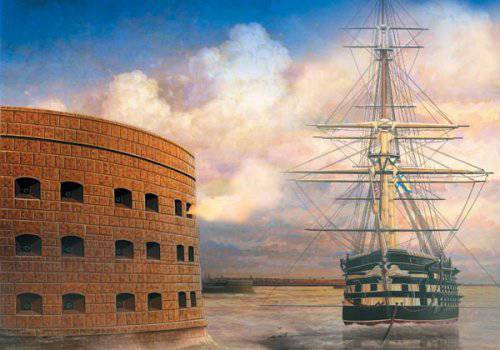
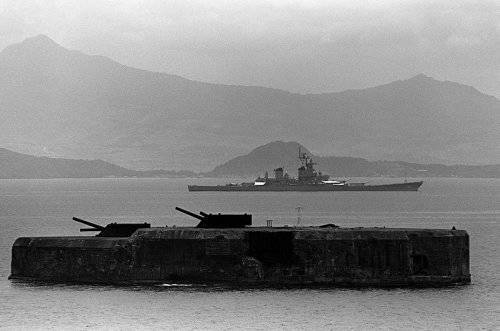

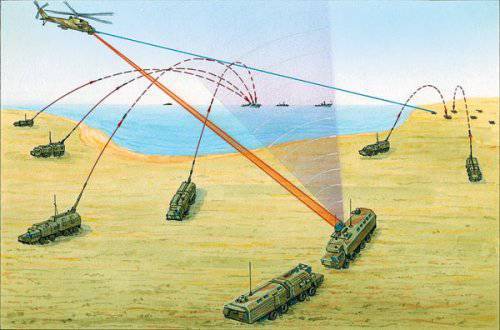
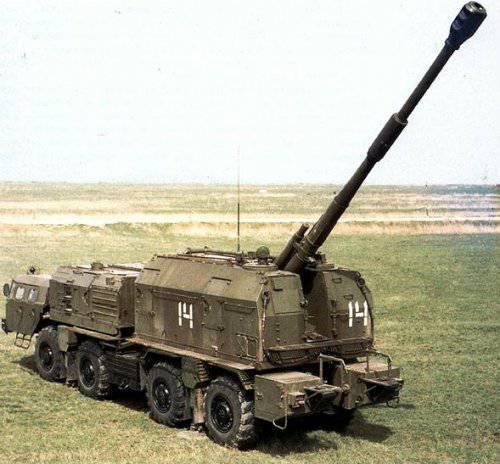
Information